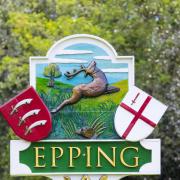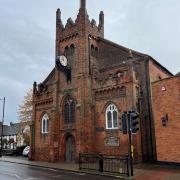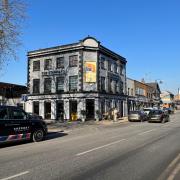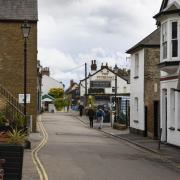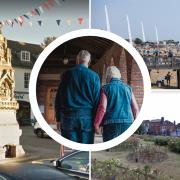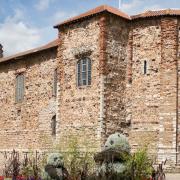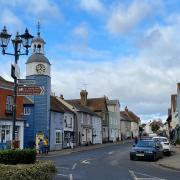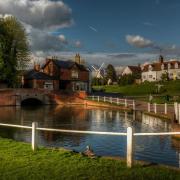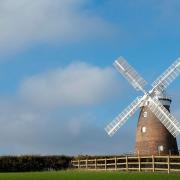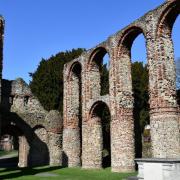Witham’s River Walk has been a celebrated green retreat in the town for generations. Louise Flloyd discovers what it means to residents and why it is an ever-evolving resource
Witham’s River Walk began its expansion in the early 1970s, to bring a touch of the countryside through the middle of the town. It meanders for about 3.3km along the River Brain and covers an area of 36 hectares, from Ebenezer Close in the north to the Whetmead Nature Reserve in the south east.
The idyllic walk is an ideal way for the public to connect with a variety of wildlife habitats. As you pass the town centre, there are large areas of amenity grassland where the public walk freely and children can play without infringing on the surrounding habitats. There are also areas of rough grassland, which provide a home for invertebrates, small mammals and reptiles. At its edges, there are vast areas of nettle beds, which are a rich wildlife resource, despite often being seen as weedy waste ground.
A mosaic of marshy vegetation, tall grassland and scrub, it also provides a diverse habitat for a range of wildlife such as common lizards, great crested newts, bats and birds, while areas of dense and scattered scrub provide an important habitat for breeding birds and invertebrates.
Jane Coleman, deputy town clerk for Witham Town Council, is responsible for ensuring the River Walk is well maintained and looked after to a high standard. Jane explains: ‘Working closely with the local community, the town council seeks the best balance between the needs and interests of residents and wildlife, with a strong emphasis on providing safe easy access and enjoyment for all. This natural corridor is an invaluable green lung for local residents during the day and for wildlife at night.’ Jane adds: ‘It’s amazing to find such a large area of open space within a town. The birds and wildlife that live here are incredible. I saw a kingfisher recently for the first time in my life and I’ve seen video footage of the otters who live here.’
Witham Town Council took over responsibility for looking after the River Walk in 2005, on a 25-year lease from Braintree District Council. Day to day care of the River Walk is undertaken by the Town Council Open Spaces Team, a small group of town councillors and local residents.
In 2012, The Friends of Witham’s River Walk and Nature Reserves was created by a group of local residents who felt passionately about the condition and future of the River Walk and other local nature reserves. They aim to raise public awareness of these areas and reflect the wider concerns of local residents to the council.
‘The River Walk is a fantastic asset for the town and a great focus for like-minded people to get involved at many levels,’ reveals Sue Manning, a local resident and a member of Witham’s River Walk and Nature Reserve Management Group. She continues: ‘Discovering the natural history on your doorstep is a lasting pleasure which can be done at any time, and it is free. It is an outstanding stretch of land which caters for all tastes, from parkland to marsh land, including designated local wildlife sites. To measure success of our plans, we have undertaken some monitoring of current species, including otters. I had time on my hands, so I invested in a CCTV camera with infra red and motion detection. Within the first few days I had my first encounter, which was a ‘wow’ experience, and now I am hooked.’
In 2012, the Essex Wildlife Trust, in partnership with Witham Town Council, embarked on an ambitious project to restore a disused backwater channel which had been by-passed many years before to provide fast running water for the local mill. As the old channel was excavated, the opportunity was also taken to create a new wildlife pond in the area, to provide an important standing freshwater resource for species, including great crested newts and dragonflies. Although the work looked devastating, 18 months on the vegetation has grown back and there are already a variety of fish.
Darren Tansley, water for wildlife officer at the Essex Wildlife Trust, was part of the project, and explains why this is a great opportunity for the public to connect with the wildlife. ‘Getting out into any green space has been demonstrated to improve a person’s health and well-being,’ says Darren. ‘The River Brain had been artificially straightened for a mill structure in the past, but it was still possible to identify where the original meandering channel had been. We decided to restore the river along the original channel in order to provide wildlife habitat for fish, water voles and kingfishers, while providing extra capacity for flood water. By restoring the meandering channel, the river flows more slowly and reduces the risk of flooding downstream. A large pond was also constructed to hold water during high flows and gradually soak away during dry periods.’




